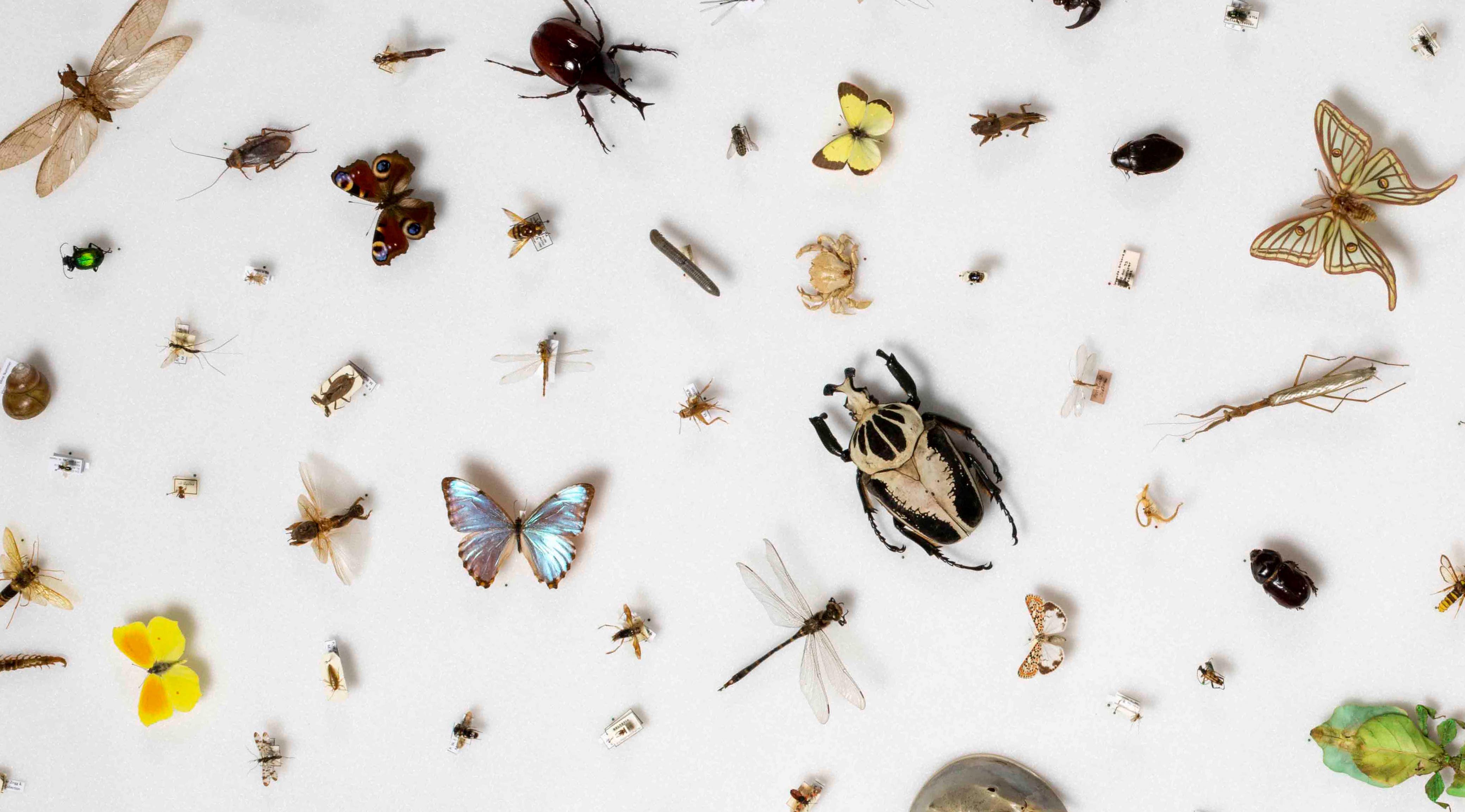Navigation auf uzh.ch
Navigation auf uzh.ch

A longhorn beetle, a shield bug and a bark mantis – larger-than-life-sized and luminously colorful photographs by Levon Biss welcome visitors to the Zoological Museum. They guide the way into the new special exhibition, which revolves around insects and explores their diversity, their beauty and their significance in our everyday lives. Crickets and cicadas chirp inside the exhibition hall, and the sound of a fly buzzing by is heard now and again. Right at the entrance, an entire wide-ranging inventory of tiny creatures awaits on an illuminated table, inevitably raising the question: What makes an animal an insect in the first place?
The new special exhibition begins with the biology of insects, the metamorphoses they undergo, and their enormous array of shapes and colors. Antennae, mandibles, legs and wings in a multitude of variations convey an impression of the vast spectrum of functions and specializations that these characteristic body parts have. “The sight of insects seldom evokes outbursts of enthusiasm; exclamations of delight are rare,” says Isabel Klusman, the head of the museum and curator of the exhibition. “Our aim with the exhibition is to arouse fascination for these amazing, aesthetically beautiful, and marvelously unique animals.” One way of doing that is with the compound eye goggles on display, which visitors can don to view the world through the eyes of an insect.
Insects aren’t just beautiful to behold, they also play a vital role in our everyday lives. As pollinators, they are instrumental in agriculture to helping fruit and vegetables grow. Visitors to the exhibition can try their hand at searching for nectar on an oversized sage flower and then carrying around pollen practically without being aware of it. Some insects produce natural resources such as honey or silk. Others destroy harmful insects or enhance soil fertility as ground dwellers. And last but not least, insects are an important food source for a wide array of vertebrates.
Insects can, however, also act as harmful pests by infesting crops, food stocks, fabrics or wood, or by transmitting pathogens to plants, animal and humans. Which pests occur and where? How are they combated? And what consequences do those countermeasures have for our environment? The exhibition visualizes and explains in detail four habitats for pests: Farms, gardens, homes and humans. Insect research projects by the University of Zurich, the Swiss Federal Institute for Forest, Snow and Landscape Research, and the Research Institute for Organic Agriculture are also presented at different points of the exhibition.
Finally, a large area of the exhibition is devoted to the much discussed problem of insect population decline, which is visually allegorized by a tottering rolling chest of drawers of the kind typically used to store insect collections. A diverse assemblage of beetles, butterflies, bugs and grasshoppers still populate the sliding drawers, but they aren’t doing particularly well in this teetering position. There is scientific consensus on the evident trend toward insect loss and the catastrophic consequences for our ecosystem. The exhibition delivers a wealth of alarming facts on this topic.
“The situation is grave,” says Dr. Klusman. “Changing something so that the situation at least doesn’t worsen requires actions on multiple levels on the part of researchers, policymakers, and each and every one of us.” The exhibition also provides simple tips on how to adjust everyday behavior habits in your garden, on your balcony, in your home or when shopping. Although that cannot reverse the decline of the insect population, it perhaps may slow it to some extent.